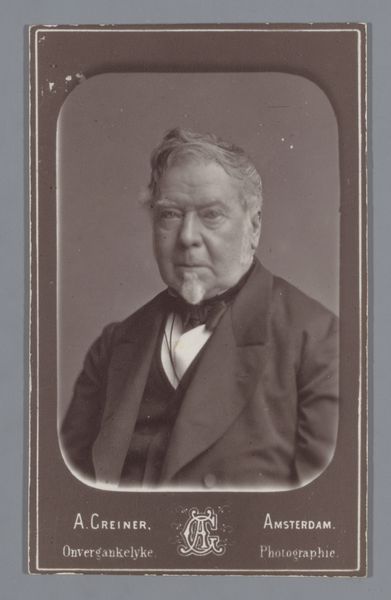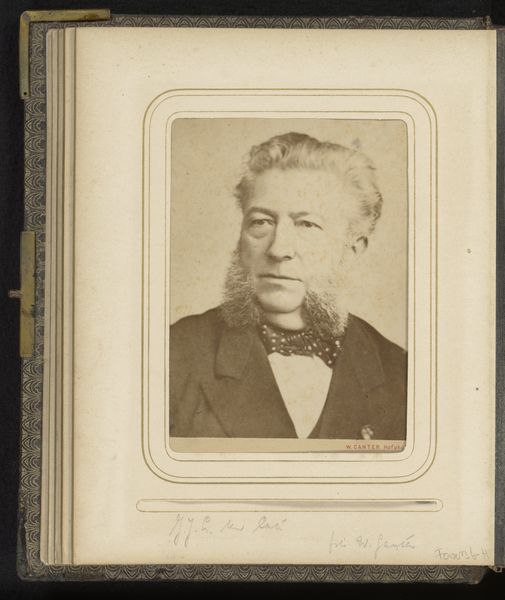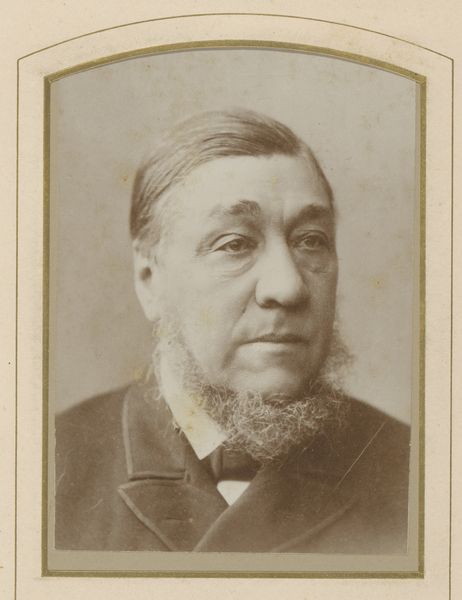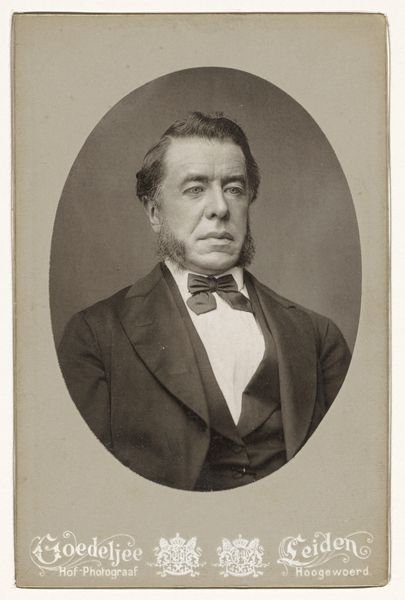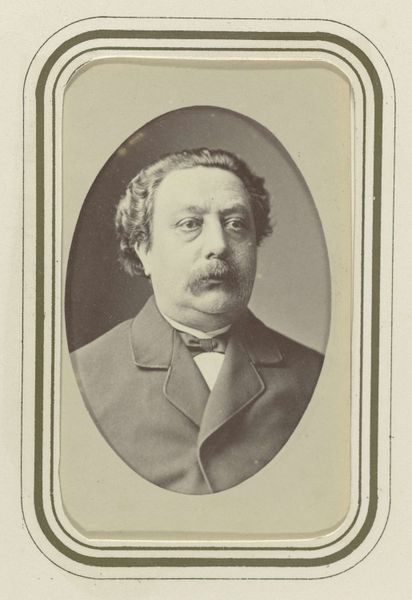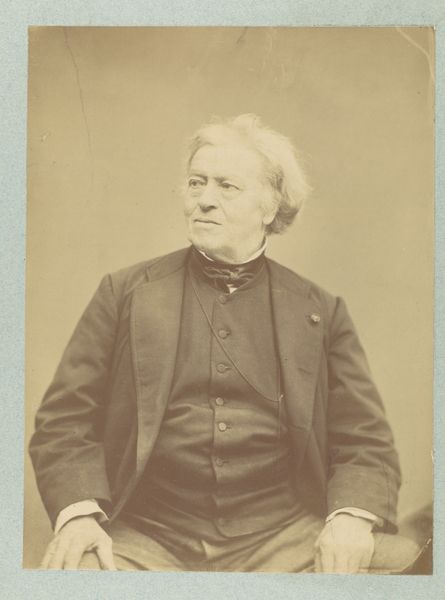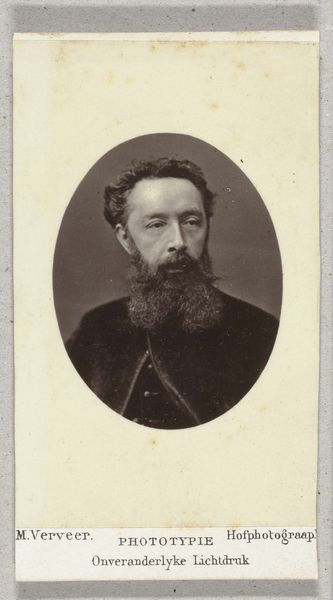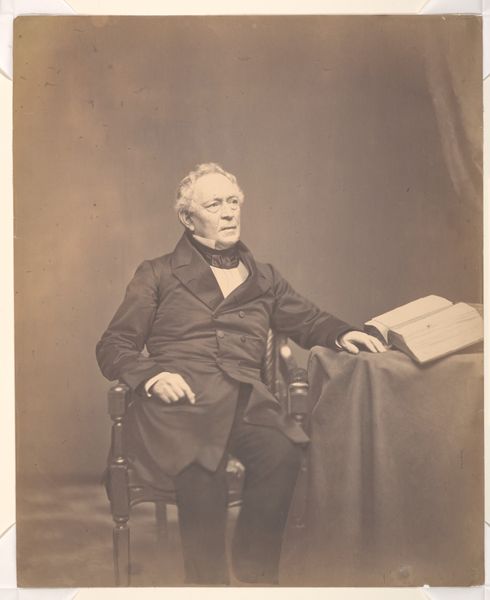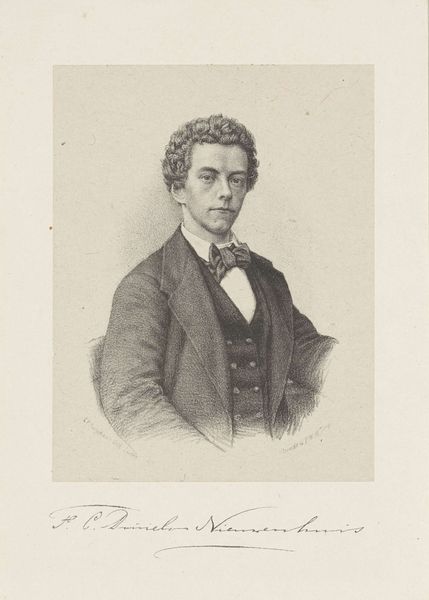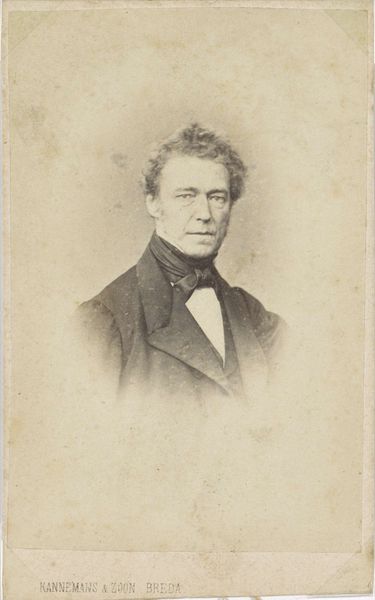
Ovaal studioportret van de dominee en dichter J.J.L. ten Kate 1870 - 1880
0:00
0:00
wegnermottu
Rijksmuseum
print, photography
#
portrait
# print
#
photography
#
historical photography
#
19th century
Dimensions: height 128 mm, width 88 mm, height 145 mm, width 105 mm
Copyright: Rijks Museum: Open Domain
Curator: This studio portrait, taken between 1870 and 1880, presents us with J.J.L. ten Kate, a clergyman and poet, as captured through the lens of Wegner & Mottu. It’s currently housed here at the Rijksmuseum. Editor: My initial thought? Somber. Sepia tones always give that vintage melancholic aura. Though the composition, within that oval frame, has a rather strong, grounded presence, doesn’t it? Like he's gazing out from a bygone era right into our eyes. Curator: Absolutely. We have to remember, photographic processes were very different then. Think of the material constraints, the exposure times. This is a print; quite a delicate object, reflecting the early days of photographic portraiture, which of course transformed how likenesses were reproduced and circulated. Editor: True! It’s almost painterly in its light and shadow play. I can almost feel the texture of his…those peculiar sideburns! What are those mutton chops trying to convey, I wonder? Poet, clergyman—and obviously a man of impeccable facial hair. Curator: Well, they are a very good example of Victorian grooming trends. What interests me is how studio photography democratized portraiture. Previously, only the wealthy could afford painted portraits. Photography brought representations to a wider demographic. Think about the accessibility and consumption this enabled. Editor: It's fascinating to ponder, this collision of technology, status, and the human desire for memory. It speaks volumes—or, perhaps, verses!—about societal shifts. The sitter projects such gravity; perhaps that reflects the solemnity attached to the photographic process itself? Curator: Quite possibly. And considering his vocation, we may also reflect on the intersection of faith, artistry, and burgeoning industrial processes represented in this image. Photography gave artists a new set of tools. Editor: So, next time I see questionable facial hair trends, I'll be sure to remember Dominee Ten Kate, his dignified stare, and how this single photo is such a time-machine to contemplate history, culture and even personal expression, one face at a time. Curator: Indeed. It is also an exquisite material artifact of societal transformation; that tension between technological advance, and artistic intention is so very fascinating!
Comments
No comments
Be the first to comment and join the conversation on the ultimate creative platform.

